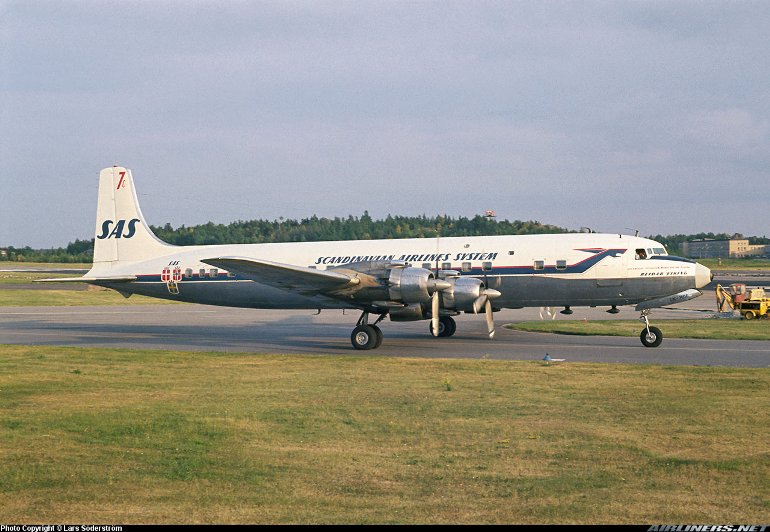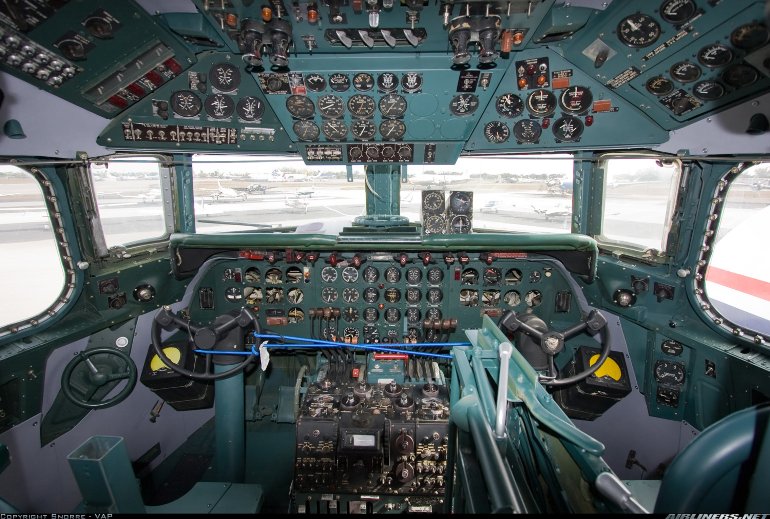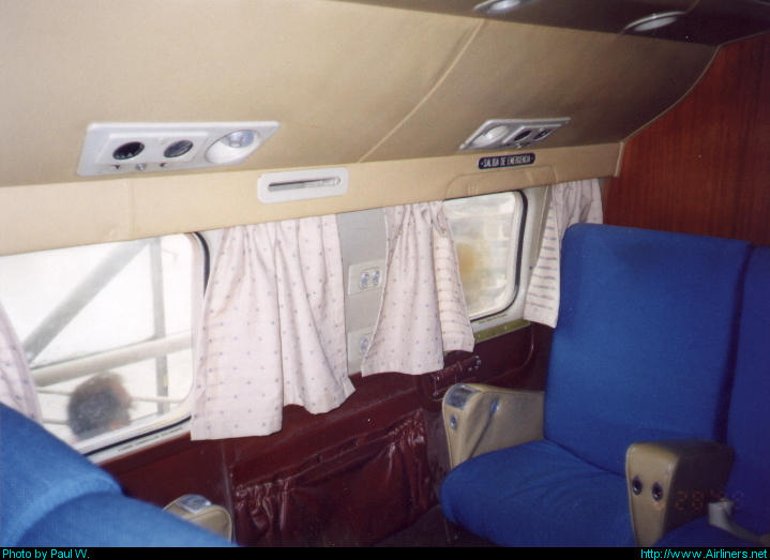Aircraft Technical Data
Douglas DC-7



| Details | |
| Country of Origin | United States of America |
| Type | Piston engine airliner and freighter |
| History | Douglas' largest and last piston engined airliner, the DC-7 was one of the first airliners capable of nonstop trans Atlantic crossings between New York and London. Previously the DC-7 designation had applied to a commercial development of the C74 Globemaster I that PanAm had ordered. As it emerged though the DC-7 arose from an American Airlines requirement for a stretched longer range development of the DC-6. The resulting aircraft was based on the same wing of the DC-6 (also the same basic wing designed for the DC-4), with a stretched DC-6 fuselage, more powerful Wright Turbo Compound engines and extra fuel allowing Douglas to guarantee it could offer nonstop transcontinental US range in both directions. The prototype DC-7 flew for the first time on May 18 1953, and the type entered service with American that November. Production of the initial DC-7 was solely for US domestic operators. The improved DC-7B had the same dimensions as the DC-7, but carried extra fuel, allowing PanAm to inaugurate nonstop New York/London services from June 1955. While the DC-7B could fly New York/London nonstop, weather conditions often forced reverse services to make a refuelling stop at Gander. This operational hurdle gave Douglas the impetus to develop the ultimate DC-7 model, the DC-7C `Seven Seas'. The DC-7C featured extra fuel capacity, a 3.05m (10ft) fuselage stretch and more powerful engines, and could cross the North Atlantic nonstop in either direction. It entered service in April 1956, although sales were restricted by the coming availability of jets. Today a small number DC-7s survive, mainly as freighters. Douglas offered DC-7F conversions from 1959 (the DC-7F described above is based on the DC-7B). Others are used for firebombing. |
| Powerplants | DC-7F & DC-7C - Four 2535kW (3400hp) Wright R3350EA1 or EA4 Turbo Compound radial piston engines driving four blade constant speed propellers. |
| Performance | DC-7F - Typical cruising speed 555km/h (300kt). Range with max fuel and no reserves 7130km (3850nm). DC-7C - Typical cruising speed 555km/h (330kt). Range with max payload 5810km (3135nm), range with max fuel and no reserves 9077km (4900nm). |
| Weights | DC-7F - Basic operating 30,030kg (66,200lb), max takeoff 57,153kg (126,000lb). DC-7C - Basic operating 36,287kg (80,000lb), max takeoff 64,865kg (143,000lb). |
| Dimensions | DC-7F - Wing span 35.81m (117ft 6in), length 33.24m (108ft 11in), height 8.90m (29ft 3in). Wing area 136.0m2 (1463sq ft). DC-7C - Wing span 38.80m (127ft 6in), length 34.23m (112ft 3in), height 9.65m (31ft 8in). Wing area 152.0m2 (1637sq ft). |
| Capacity | Flightcrew of three. In passenger configurations most standard length DC-7s seated 99 in a high density single class layout, stretched DC-7Cs seated up to 105 passengers. Capacity of DC-7F conversion of the DC-7B is 15,700kg (34,600lb). |
| Production | DC-7 production was 338, comprising 120 DC-7s, 97 DC-7Bs and 121 DC-7Cs. Approximately 40 remain in service. |
| Related Links | Douglas DC-7 |
The backbone of this section is from the The International Directory of Civil Aircraft by Gerard Frawley and used with permission. To get your own copy of the book click here. |
|








